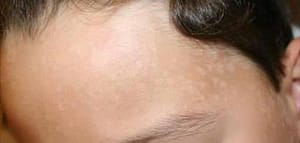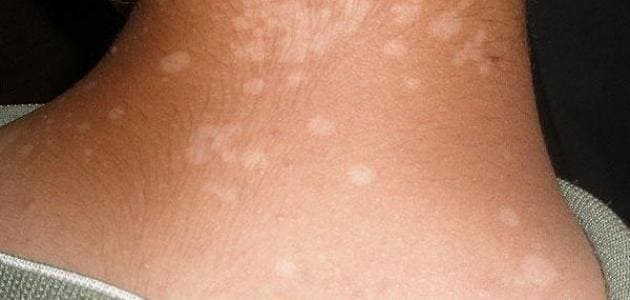White Patches and Spots on The Skin: Causes and Remedies
White patches on the skin are more common than you might think. They can appear for a variety of reasons—ranging from harmless skin changes to signs of underlying conditions like vitiligo or fungal infections. Understanding the causes is the first step toward effective treatment.
What Are White Patches on the Skin?
White patches or spots are areas where the skin loses its natural color. They may be smooth, scaly, itchy—or none of the above. While some are harmless, others may indicate fungal infections, autoimmune issues, or reactions to environmental triggers.
Learn more about White Spots On The Skin From Tanning Bed

Causes of White Spots on Skin
There are two major causes of white spots on the skin :-
Allergic Reactions
• Weather Allergies
Changes in temperature or humidity may affect your skin’s natural yeast balance, especially for those with oily skin or excessive sweating. This often causes fungal white patches.
• Latex Sensitivity
Exposure to rubber products like gloves or balloons can lead to dryness, redness, and white marks on the skin—especially on the hands and wrists.
• UV Radiation (Sun Allergy)
UV exposure, either from the sun or tanning beds, may cause white patches known as idiopathic guttate hypomelanosis. It’s most common on the face, arms, and legs.
How to prevent Sun Allergy
• Eczema
This chronic condition may lead to white or discolored dry spots, particularly during flare-ups.
Shea Butter for Eczema [The Ultimate Guide]
Non-Allergic Reactions
• Vitiligo
An autoimmune disorder where skin loses pigment, creating larger white patches. It often starts around the eyes, hands, or mouth.
• Tinea Versicolor
A fungal infection that disrupts pigment, leaving behind pale or darker spots on the neck, chest, and back.
• Pityriasis Alba
Common in children, this condition begins with red scaly patches that fade into lighter skin spots.
• Hypoglycemia-Related Discoloration
Sudden loss of skin color in patches may be linked to underlying blood sugar issues.
• Skin Trauma or Burns
Scars from laser hair removal, sunburns, or infections may result in white patches that persist even after healing.

White patches on the skin can be quite uncomfortable to live with. It is even more uncomfortable when the white spots become itchy as they may tend to spread all over the body.It is, therefore, important to understand how to get rid of the white spots on the face naturally, and when to see a doctor for hospital-based medication.
Before jumping to medications, try these natural methods to restore your skin tone.
-
Turmeric & Mustard Oil: Mix into a paste and apply daily to reduce bacteria and inflammation.
-
Coconut Oil: Hydrates and soothes dry, irritated skin.
-
Aloe Vera Gel: Helps sun-damaged skin recover and promotes healing.
-
Honey: Natural antifungal—apply directly to clean, dry skin.
-
Ginger Juice: Boosts circulation and helps in pigment regeneration.
✅ Use these remedies consistently for at least 2 weeks for visible improvement.
Medical Treatments for Skin Discoloration
Consult a dermatologist if symptoms persist or spread. You may be prescribed:
-
Antifungal Creams: Ciclopirox, Ketoconazole
-
Shampoos for fungal skin: Selenium sulfide, Ketoconazole shampoo
-
Oral Medications: Fluconazole, Itraconazole
Topical and oral treatments work by eliminating fungi and bacteria to allow your skin to restore its natural pigmentation.
Lifestyle Tips to Prevent White Patches
Taking care of your skin can reduce future outbreaks.
-
🌤️ Avoid excessive sun exposure or use SPF protection.
-
👕 Wear loose, light-colored clothing to reduce sweating.
-
🧴 Moisturize regularly if you have dry or sensitive skin.
-
🧼 Keep your skin clean and dry, especially in humid climates.
-
💨 Avoid triggers like latex, heat, or tanning beds if you’re prone to allergic skin reactions.
When to See a Doctor
👉 You should consult a dermatologist if:
-
White patches are spreading or multiplying
-
You feel itching, burning, or discomfort
-
You’ve tried home remedies but see no improvement after 2–3 weeks
-
You notice other symptoms like fatigue, swelling, or fever
Some conditions like vitiligo, autoimmune disorders, or hormonal imbalances require medical diagnosis and treatment.
Final Thoughts
White patches on the skin may not always be serious, but they shouldn’t be ignored either. Knowing what causes them and how to treat them—naturally or with medical support—can help you restore healthy, glowing skin.
Learn more about 7 Home Remedies That Will Help You Get Rid of Skin Allergy & Itchy Reaction
💬 FAQs About White Patches on Skin
Q1: Are white spots on skin permanent?
No, many cases (like tinea or eczema-related spots) are temporary. Others, like vitiligo, may need long-term treatment.
Q2: Can coconut oil remove white patches?
Coconut oil soothes irritated skin and may help with hydration, especially for dry, itchy patches.
Q3: How long does it take for white patches to go away?
Mild cases improve in 1–2 weeks with treatment. Chronic conditions may require longer follow-up and consistent care.


I have white spots on my chest and It’s irritating. This is the answer to my problem. Thanks for sharing this.
You are welcome…
Hi. The https://allergygate.com site is great: it has a lot of valuable information and is easy to find.
I learned a lot from here, so I want to ask about a recommended book as the best natural remedies: https://bit.ly/3cJNuy9
What do you think, it’s worth buying, is it too cheap? Thanks and hugs!
This site helps me a lot, I’ve been experiencing these white patches on my skin lately and it is very irritating. Thanks to this blog!